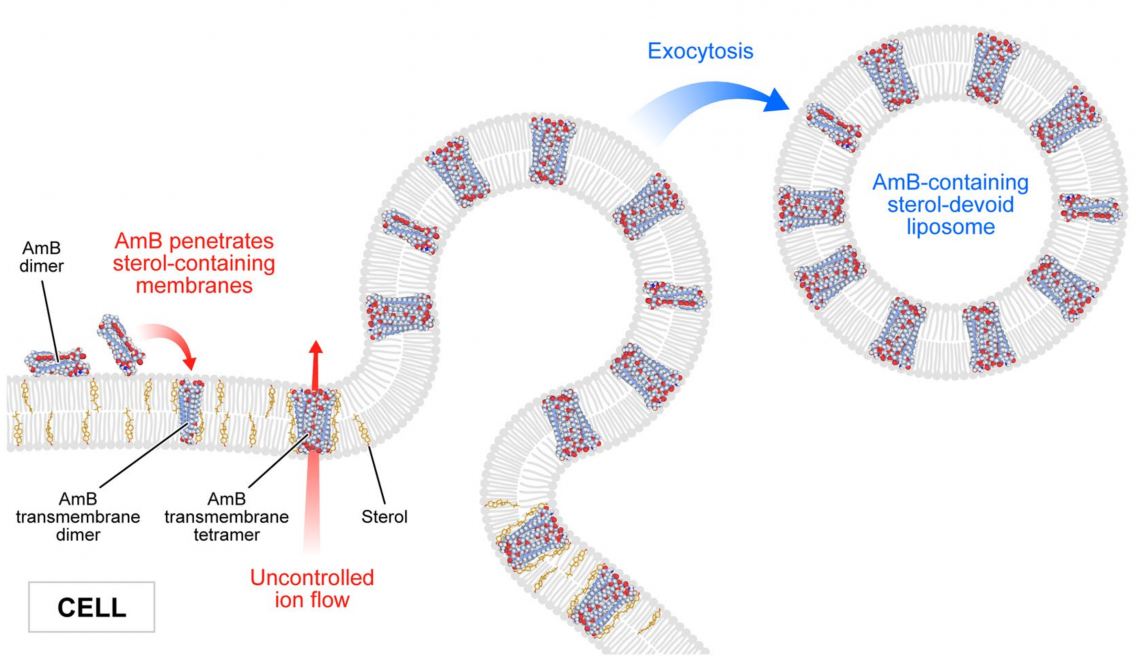
Imaging of human cells exposed to an antifungal antibiotic amphotericin B reveals the mechanisms associated with the drug toxicity and cell defence
Ewa Grela, Mateusz Piet, Rafal Luchowski, Wojciech Grudzinski, Roman Paduch and Wieslaw I. Gruszecki
Amphotericin B is a popular antifungal antibiotic, a gold standard in treatment of systemic mycotic infections, due to its high effectiveness. On the other hand, applicability of the drug is limited by its considerable toxicity to patients. Biomembranes are a primary target of physiological activity of amphotericin B and both the pharmacologically desired and toxic side effects of the drug relay on its molecular organization in the lipid phase. In the present work, molecular organization, localization and orientation of amphotericin B, in a single lipid bilayer system, was analysed simultaneously, thanks to application of a confocal fluorescence lifetime imaging microscopy of giant unilamellar vesicles. The results show that the presence of sterols, in the lipid phase, promotes formation of supramolecular structures of amphotericin B and their penetration into the membrane hydrophobic core. The fact that such an effect is substantially less pronounced in the case of cholesterol than ergosterol, the sterol of fungal membranes, provides molecular insight into the selectivity of the drug.
